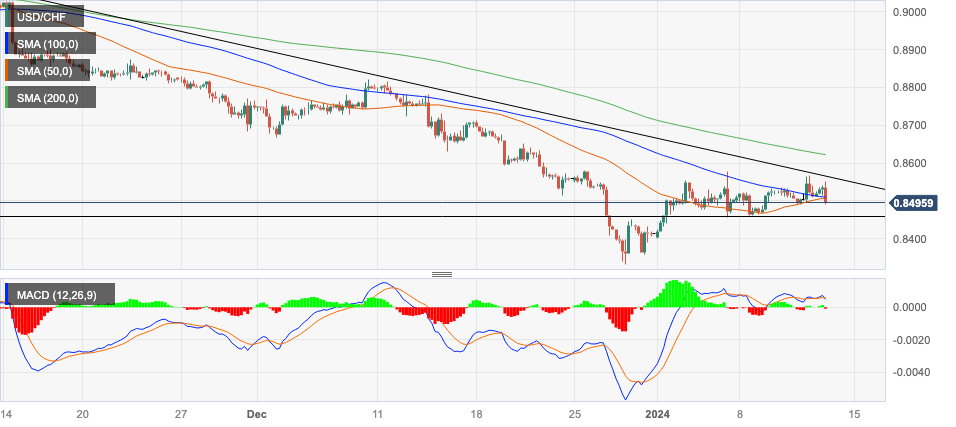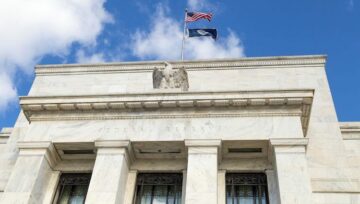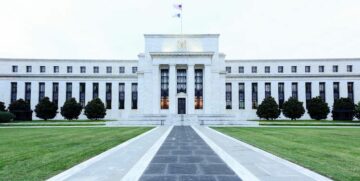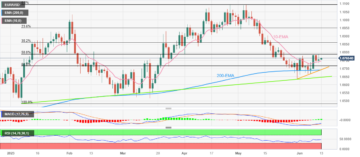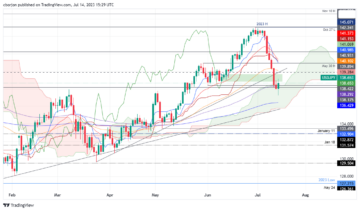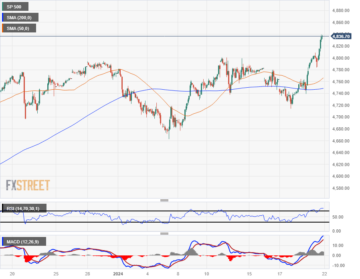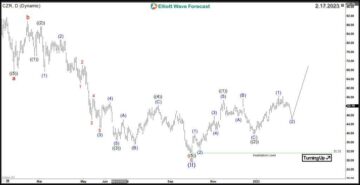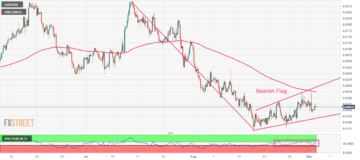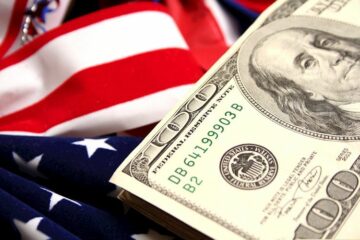- The Swiss Franc gained slightly against the Greenback on Friday after US Producer Price Index data fell short of estimates.
- Overall PPI fell and core factory gate prices flatlined for three consecutive months.
- The data substantially increases the probabilities of interest rates falling in the US in the future.
The Swiss Franc (CHF) gained slightly on Friday against the US Dollar (USD) but weakened a quite a bit for the full week. The USD/CHF pair traded 0.02% lower on Friday but rose 0.26% for the week.
The release of factory gate inflation in the form of the US Producer Price Index (PPI) caused the Swiss Franc to strengthen against the Greenback earlier in the session, but that USD weakness did not last the full session. The data showed wholesale price gains in December were lower than economists had estimated. This increases the probability that interest rates in the US will fall earlier than had been expected. Since lower interest rates tend to attract less foreign capital inflows, the news is bearish for the US Dollar.
The USD/CHF pair formed a daily high at 0.8550 and a low at 0.8488. The CHF strengthened as well against the Pound Sterling and the Euro on Friday.
Daily digest market movers: Swiss Franc rises after factory gate prices fall for third consecutive month
- The Swiss Franc gains against the US Dollar after US PPI inflation data for the month of December shows overall wholesale prices falling for the third consecutive month. The data is likely to feed through into consumer prices, leading to lower overall inflation in the future.
- Overall PPI on a monthly basis declined for the third month in a row in December, dropping by 0.1% when a 0.1% rise had been forecast. The 0% initial reading for the previous month of November was revised down to a 0.1% fall.
- The Producer Price Index ex Food and Energy, which is seen as the more representative reading, rose by 1.8% in December compared to a year ago. This was lower than the 1.9% gain forecast and the 2.0% registered in November.
- On a monthly basis the PPI ex Food and Energy data showed prices flatlining for three consecutive months, something which the US Federal Reserve will probably take note of at its next meeting when it next comes to set interest rates. PPI stood unchanged in December compared to the previous month, which was lower than the 0.2% rise estimate, and the same as the flat reading in November.
- Overall PPI inflation on a yearly basis came out at 1.0% YoY, undercutting the 1.3% expected but higher than the 0.8% of November.
- The release of the PPI data led to a surge in the market-gauged probability of the Federal Reserve (Fed) cutting interest rates at its meeting in March 2024. The estimated odds rose to 77% at the time of writing after the PPI on Friday, from around 63% after the Consumer Price Index data released on Thursday.
- The odds now strongly favor the Fed cutting interest rates from 5.5% to 5.25% in March.
- This stands in stark contrast to the Swiss National Bank (SNB), which has not said it is considering cutting interest rates at all.
Swiss Franc technical analysis: USD/CHF could resume long-term downtrend
USD/CHF – the number of Swiss Francs (CHF) that one US Dollar (USD) can buy – declines on Friday, falling back into lockstep with the longer-term bear trend, Since the trend is likely to extend the move favors short-holders.
US Dollar vs Swiss Franc: 4-hour Chart
The current four-hour bar is painted red as the pair sells off after the release of the PPI data. A break below the January consolidation range lows at 0.8465 would add confirmatory technical evidence to the view the downtrend is resuming, and see prices likely fall back to the November lows at 0.8332.
It would take a break above the major trendline for the downmove at around 0.8600 to confirm a change in the short-term bear trend and more upside. But the next target after that would be the 200-four-hour Simple Moving Average (SMA) not much higher at circa 0.8630.
SNB FAQs
The Swiss National Bank (SNB) is the country’s central bank. As an independent central bank, its mandate is to ensure price stability in the medium and long term. To ensure price stability, the SNB aims to maintain appropriate monetary conditions, which are determined by the interest rate level and exchange rates. For the SNB, price stability means a rise in the Swiss Consumer Price Index (CPI) of less than 2% per year.
The Swiss National Bank (SNB) Governing Board decides the appropriate level of its policy rate according to its price stability objective. When inflation is above target or forecasted to be above target in the foreseeable future, the bank will attempt to tame excessive price growth by raising its policy rate. Higher interest rates are generally positive for the Swiss Franc (CHF) as they lead to higher yields, making the country a more attractive place for investors. On the contrary, lower interest rates tend to weaken CHF.
Yes. The Swiss National Bank (SNB) has regularly intervened in the foreign exchange market in order to avoid the Swiss Franc (CHF) appreciating too much against other currencies. A strong CHF hurts the competitiveness of the country’s powerful export sector. Between 2011 and 2015, the SNB implemented a peg to the Euro to limit the CHF advance against it. The bank intervenes in the market using its hefty foreign exchange reserves, usually by buying foreign currencies such as the US Dollar or the Euro. During episodes of high inflation, particularly due to energy, the SNB refrains from intervening markets as a strong CHF makes energy imports cheaper, cushioning the price shock for Swiss households and businesses.
The SNB meets once a quarter – in March, June, September and December – to conduct its monetary policy assessment. Each of these assessments results in a monetary policy decision and the publication of a medium-term inflation forecast.
- SEO Powered Content & PR Distribution. Get Amplified Today.
- PlatoData.Network Vertical Generative Ai. Empower Yourself. Access Here.
- PlatoAiStream. Web3 Intelligence. Knowledge Amplified. Access Here.
- PlatoESG. Carbon, CleanTech, Energy, Environment, Solar, Waste Management. Access Here.
- PlatoHealth. Biotech and Clinical Trials Intelligence. Access Here.
- Source: https://www.fxstreet.com/news/swiss-franc-strengthens-against-us-dollar-after-us-factory-gate-prices-fall-for-third-month-202401121544
- :has
- :is
- :not
- 1
- 11
- 2%
- 2011
- 2015
- 2024
- 31
- 33
- 35%
- 41
- a
- above
- According
- add
- advance
- After
- against
- ago
- aims
- All
- an
- analysis
- and
- Animate
- appreciating
- appropriate
- ARE
- around
- AS
- assessment
- assessments
- At
- attempt
- attract
- attractive
- average
- avoid
- back
- Bank
- bar
- basis
- BE
- Bear
- bearish
- been
- below
- between
- Bit
- board
- Break
- businesses
- but
- buy
- Buying
- by
- came
- CAN
- capital
- caused
- central
- Central Bank
- change
- cheaper
- chf
- circa
- Close
- comes
- compared
- competitiveness
- conditions
- Conduct
- Confirm
- consecutive
- considering
- consolidation
- consumer
- consumer price index
- content
- contrary
- contrast
- Core
- could
- country
- country’s
- CPI
- currencies
- Current
- cutting
- daily
- data
- December
- decision
- Declines
- determined
- DID
- Digest
- Dollar
- down
- Dropping
- due
- during
- each
- Earlier
- economists
- ends
- energy
- ensure
- Episodes
- estimate
- estimated
- estimates
- Euro
- evidence
- excessive
- exchange
- Exchange Reserves
- expanded
- expected
- export
- extend
- factory
- Fall
- Falling
- FAQ
- favor
- favors
- Fed
- Federal
- federal reserve
- flat
- food
- For
- For Investors
- Forecast
- foreign
- foreign exchange
- foreign exchange market
- foreseeable
- form
- formed
- Franc
- Friday
- from
- full
- future
- Gain
- gained
- Gains
- gate
- generally
- governing
- Greenback
- Growth
- had
- High
- High inflation
- higher
- households
- HTTPS
- hurts
- implemented
- imports
- in
- Increases
- independent
- index
- inflation
- inflows
- initial
- interest
- INTEREST RATE
- Interest Rates
- intervening
- into
- Investors
- IT
- ITS
- January
- june
- Last
- lead
- leading
- Led
- less
- Level
- likely
- LIMIT
- Long
- long-term
- Low
- lower
- Lows
- maintain
- major
- MAKES
- Making
- mandate
- March
- March 2024
- Market
- Markets
- means
- medium
- meeting
- Meets
- module
- Monetary
- Monetary Policy
- Month
- monthly
- months
- more
- move
- Movers
- moving
- moving average
- much
- National
- National Bank
- news
- next
- note
- November
- now
- number
- objective
- Odds
- of
- off
- on
- once
- ONE
- or
- order
- Other
- out
- overall
- pair
- particularly
- Peg
- per
- Place
- plato
- Plato Data Intelligence
- PlatoData
- policy
- positive
- powerful
- ppi
- previous
- price
- Prices
- probability
- probably
- producer
- Publication
- Quarter
- quite
- raising
- range
- Rate
- Rates
- Reading
- Red
- registered
- regularly
- release
- released
- representative
- Reserve
- reserves
- Results
- resume
- Rise
- Rises
- ROSE
- ROW
- Said
- same
- sector
- see
- seen
- Sells
- September
- session
- set
- Short
- short-term
- showed
- Shows
- Simple
- since
- SMA
- SNB
- something
- Stability
- stands
- stark
- starts
- sterling
- stood
- strength
- Strengthen
- strengthened
- strong
- strongly
- substantially
- such
- surge
- Swiss
- Swiss National Bank (SNB)
- Take
- Target
- Technical
- Technical Analysis
- term
- than
- that
- The
- the Fed
- The Future
- The US Federal Reserve
- These
- they
- Third
- this
- three
- Through
- thursday
- time
- to
- too
- traded
- Trend
- Upside
- us
- US Dollar
- US Federal
- us federal reserve
- US PPI
- US Producer Price Index
- USD
- USD/CHF
- using
- usually
- View
- vs
- was
- weakness
- week
- WELL
- were
- when
- which
- wholesale
- will
- with
- would
- writing
- year
- yearly
- yields
- zephyrnet

